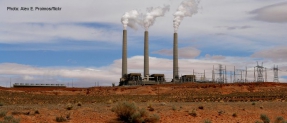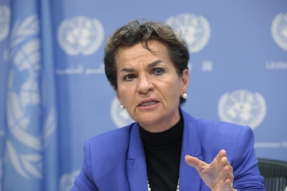The Impact of Climate Change
The Earth's climate has changed throughout history, but what we see in the last decades is uncomparable to any development before. In mid-2012 the athmospheric carbon level excessed for the first time 400 CO2 parts per mio. "Scientific evidence for warming of the climate system is unequivocal", says Intergovernmental Panel on Climate Change. The evidence for rapid climate change is compelling: I.e. Global sea level rose about 17 centimeters (6.7 inches) in the last century. The surface temperature analysis shows that Earth has warmed since 1880, with the 10 warmest years having occurred in the past 12 years. Extreme events increase. According to the National Oceanic and Atmospheric Administration, there were only ion he US a record twelve weather disasters costing more than $1 billion in 2011. The strategies to meet this are mitigation – that means reduction and prevention of greenhouse gases output - and adaptation – that means measures to adapt to the inevitable global warming.
Videos
Klimawandel
Der Klimagipfel in Durban im Dezember 2011 hat wieder keinen entscheidenden Durchbruch für den Klimaschutz gebracht. Gleichzeitig steigt der weltweite Ausstoß von Kohlendioxid trotz Wirtschafts- und Finanzkrise weiter an. Selbst Optimisten sind mittlerweile skeptisch, ob der Anstieg der globalen Durchschnittstemperatur noch auf zwei Grad begrenzt werden kann. Diese Schwelle gilt Experten als gerade noch kalkulierbar.
Download Script (PDF)
Quelle & Lizenz CC-BY-SA http://edeos.org
Energiewende
Die Energiewende ist eines der zentralen Reformprojekte Deutschlands. Im Mittelpunkt stehen die Förderung von Erneuerbaren Energien und die Steigerung der Energieeffizienz. Der Klimawandel soll damit eingedämmt und die Green Economy vorangebracht werden. Es gibt aber auch einige Reibungspunkte.
Download Script (PDF)
Quelle & Lizenz CC-BY-SA http://edeos.org
Renewable Energy and the Energy Transition
The world is driven by fossil fuels like oil and gas. This has some negative repercussions: Rising energy prices due to decreasing deposits, dependence on unstable oil and gas producing regimes and global warming. It becomes clear, that a revolution in the way how we produce and use energy is necessary. Central to this energy transition are new technologies, which produce energy from renewable sources such as wind or sun.
Download Script (PDF)
Source & Licence CC-BY-SA http://edeos.org
Articles
The De-Carb Diet
By Dr. Elmer LenzenTo comply with global climate targets, we have to reduce our carbon footprint – no ifs, ands, or buts. Nevertheless, there are a lot of challenges we need to face first. more[...]

Toward a Post-Kyoto Climate Change Architecture: A Political Analysis
By Prof. Dr. Robert O. Keohane (Princeton University ), Prof. Kal Raustiala (UCLA)Any international regime aimed at the mitigation of climate change must solve three problems. It must: (1) secure sufficient participation to be effective; (2) achieve agreement on rules that are meaningful, so that if they were followed, climate change would indeed be mitigated; and (3) ensure compliance with the rules. That is, it must solve problems of participation, effectiveness, and compliance. These problems require careful institutional design.
more[...] ![]()
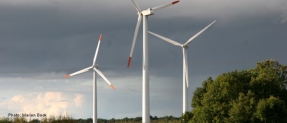
The German Energiewende – Our Contribution to a Sustainable Energy System
By Sigmar GabrielPeople around the world are observing the progress being made by Germany on its energy reforms (known as the “Energiewende”), which are no less than a complete overhaul of its energy supply system, entailing the phase-out of nuclear energy, a reduced reliance on fossil fuels, the promotion of energy efficiency, and the establishment of renewable energies as the main sources of energy. more[...]
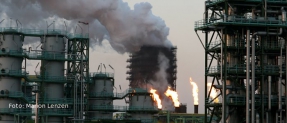
Aligning Flows of Capital with Tackling Climate Change
By James Leaton (Carbon Tracker Initiative)The Carbon Tracker Initiative (CTI) was set up a few years ago to investigate what levels of future carbon emissions were being financed. By comparing the stocks of carbon in the form of coal, oil, and gas in the ground with carbon budgets that equate to degrees of warming, we have demonstrated the huge overhang of carbon in our energy system – what we refer to as “unburnable carbon.” more[...]

Reducing Carbon Emissions in Everyday Life
By Dr. Nicola Schuldt-Baumgart (ISOE - Institute for Social-Ecological Research), Dr. Immanuel Stieß (ISOE - Institute for Social-Ecological Research)When it comes to protecting the climate, the focus is usually on business and industry. Less well-known is the fact that more than half of the total annual carbon footprint per person (11 tons) is the direct or indirect product of private households. more[...]
Christina Figueres: A Pathway Toward Carbon Neutrality
Interview with Ms. Christiana Figueres, Executive Secretary of the UN Framework Convention on Climate Change (UNFCCC)
more[...] ![]()
Lenoardo DiCaprio: “We need to change our thinking and our sense of urgency.”
“Without my (ecological) activities, I wouldn’t be a fulfilled person. Only two per cent of philanthropy goes toward protecting our environment and that’s pretty outrageous, considering it is our life support system.” more[...]
The Politics of Climate Change
By Lord Anthony Giddens (London School of Economics and Political Science (LSE))It is an important year, and everybody knows it because it is the year of Copenhagen. It’s a key for climate change policy. I do hope the Copenhagen negotiations will be successful, but there are reasons I have to be worried.
more[...] ![]()
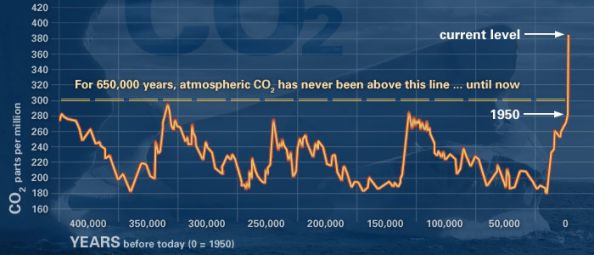
-
The time for short-term solutions is behind us
Björn Stigson, WBCSDWhen the world’s governments meet in Copenhagen in December, their representatives will be dealing with an unprecedented level of change in two interwoven areas: climate and the economy. This massive pressure for change is leading to what I believe is a new industrial revolution, one that has the potential to dramatically reshape the world we live in. That pressure will remain, no matter what global leaders decide in Copenhagen. Sustainable solutions to the complex problems we are facing will require government and business to cooperate on a level never seen before. more[...]
 The Author
The Author
-
Beyond 2012 – The World Food Programme’s Perspective for a Future Climate Change Policy
World Food Programme (WFP)Climate is a key parameter in growing food. Changes in climate pose a threat to agriculture and can lead to drastic increases in food insecurity and hunger. Climate change will affect everyone, but it has a disproportionate effect on those living in poverty in developing countries in areas where deprivation and vulnerability to climate risks and natural disasters are severe. Studies warn of a coming “global food crunch” with long-term drivers of climate change, scarcity of land and water, lack of investment in agriculture and fuel production, and rising food consumption due to population growth all combining to cause political instability. more[...]
 The Author
The Author
-
Brazil’s position on global warming
Carlos Minc BaumfeldBrazil’s position on global warming is extremely clear: We want the country to take on a leading role amongst the nations that are now dealing with this phenomenon, which has been named one of the most worrying for future generations. more[...]
 The Author
The Author
Mitigation
Adaptation

Climate Protection at Deutsche Bank
By Prof. Hanns Michael HölzCompanies need to act sustainably to maintain the trust of the societies in which they operate. Climate protection has an important role to play here. Deutsche Bank is active in the following areas: financial intermediary, environmental efficiency manager and climate ambassador. more[...]
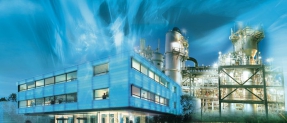
A Global Concept for Zero-Emission Buildings
By Dr. Wolfgang Große-Entrup (Bayer Group)Carbon reduction is a difficult job. Significant progress will only be possible with a coherent climate strategy. We spoke with Dr. Wolfgang Große Entrup, Head of Governmental and Product Affairs at Bayer AG about the ambitious plans.
more[...] ![]()
Avoiding Adaptation Apartheid: Climate Change Adaptation and Human Rights Law
By Margaux J. Hall (World Bank), David C. Weiss (Skadden, Arps, Slate, Meagher & Flom LLP)There is now little doubt that humans will be forced to adapt to the impacts of a warming world. There is also little doubt that the poorest people in the poorest countries will bear most of the burden of adapting to climate consequences they had almost no role in creating.(2) As the United Nations Development Programme (UNDP) has explained, “In the Netherlands, people are investing in homes that can float on water.
more[...] ![]()
| Title | Company | Year | Related tags |
|---|---|---|---|
| CDP – Reports and data | Carbon Disclosure Projekt Members | 2015 | Climate Change, Emissions |
| Reducing CO2 Emissions | Nikon | 2015 | Climate Change |
About Us // Privacy Policy // Copyright Information // Legal Disclaimer // Contact
Copyright © 2012-2018 macondo publishing GmbH. All rights reserved.
The CSR Academy is an independent learning platform of the macondo publishing group.


